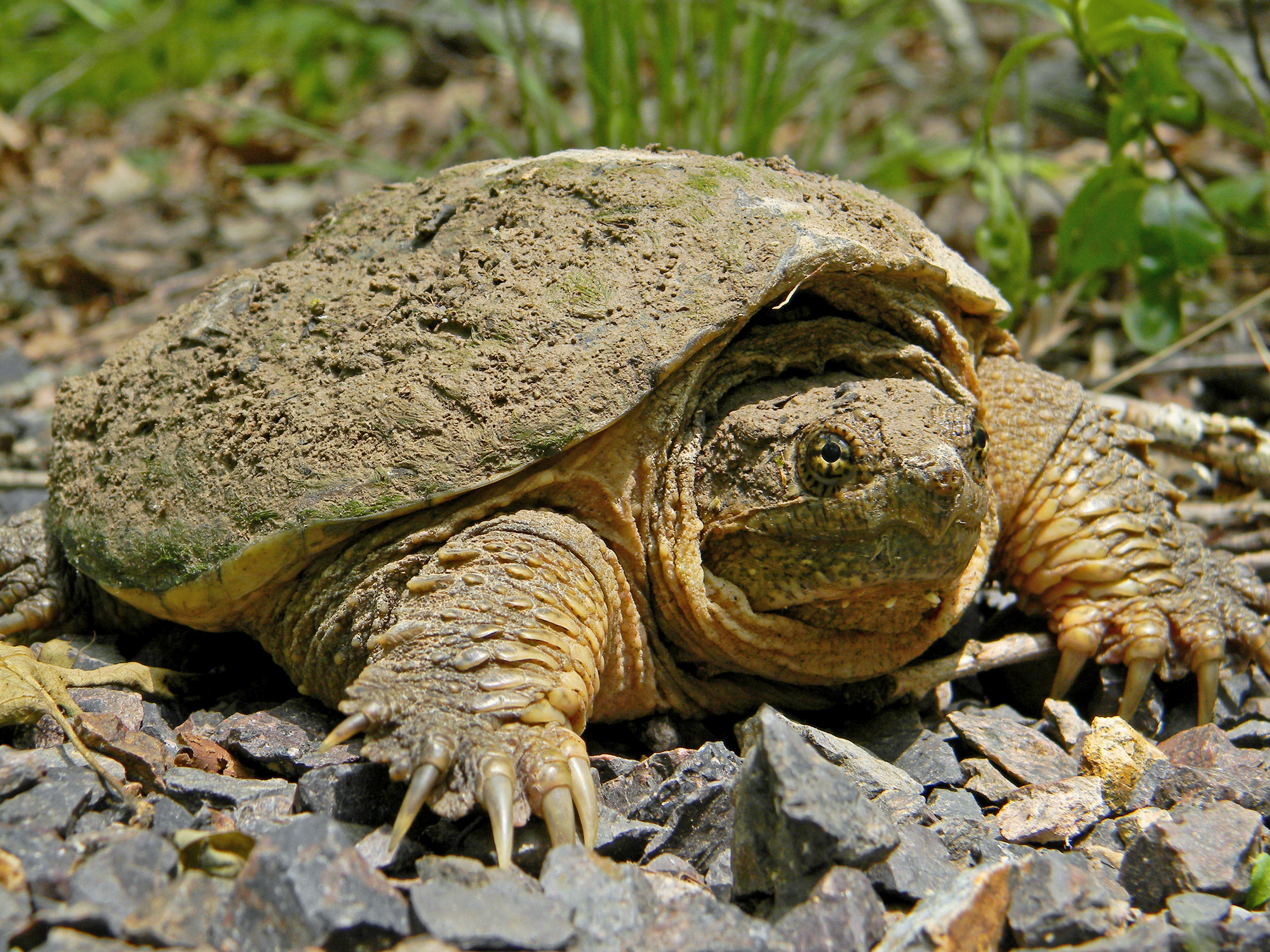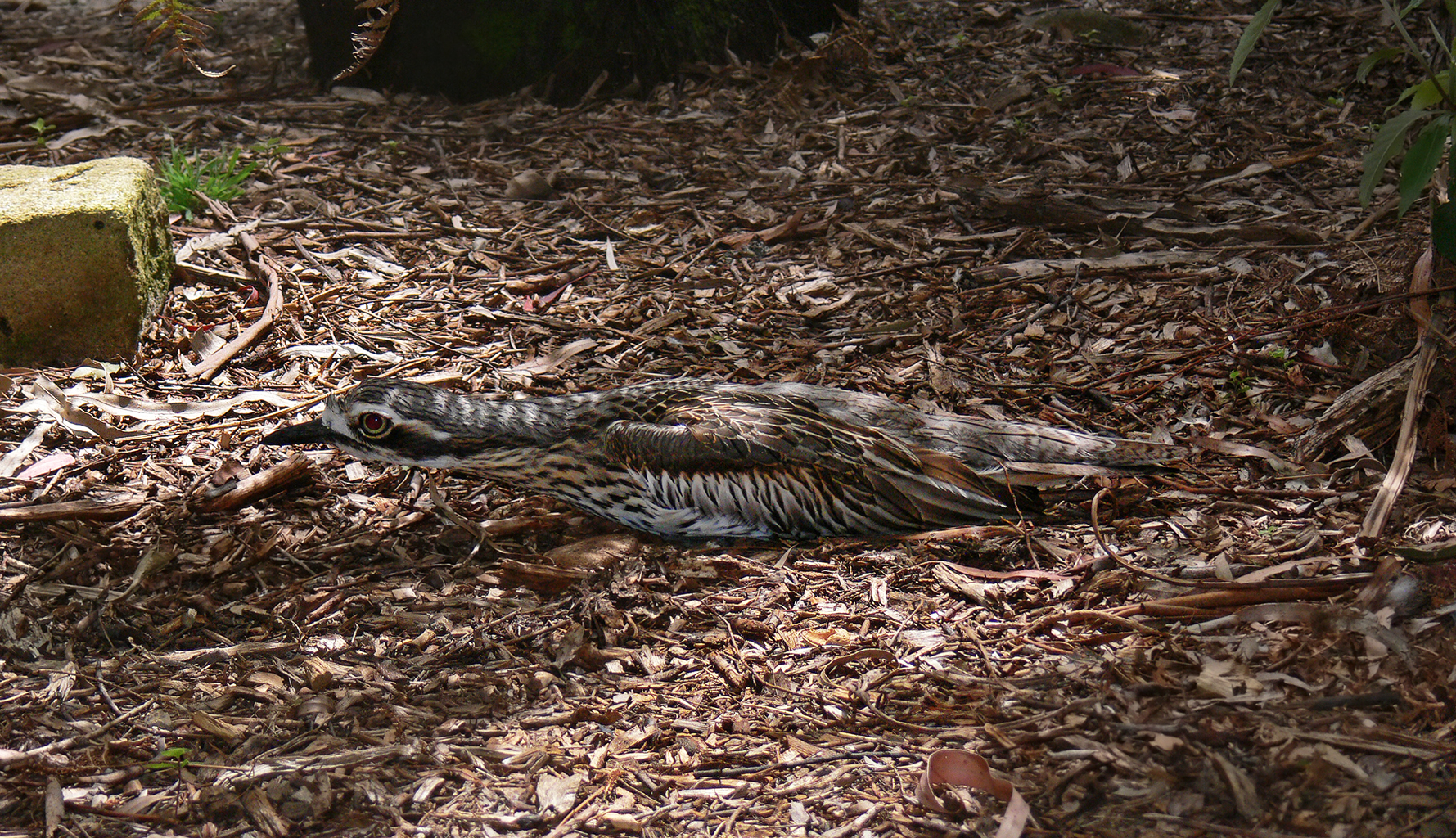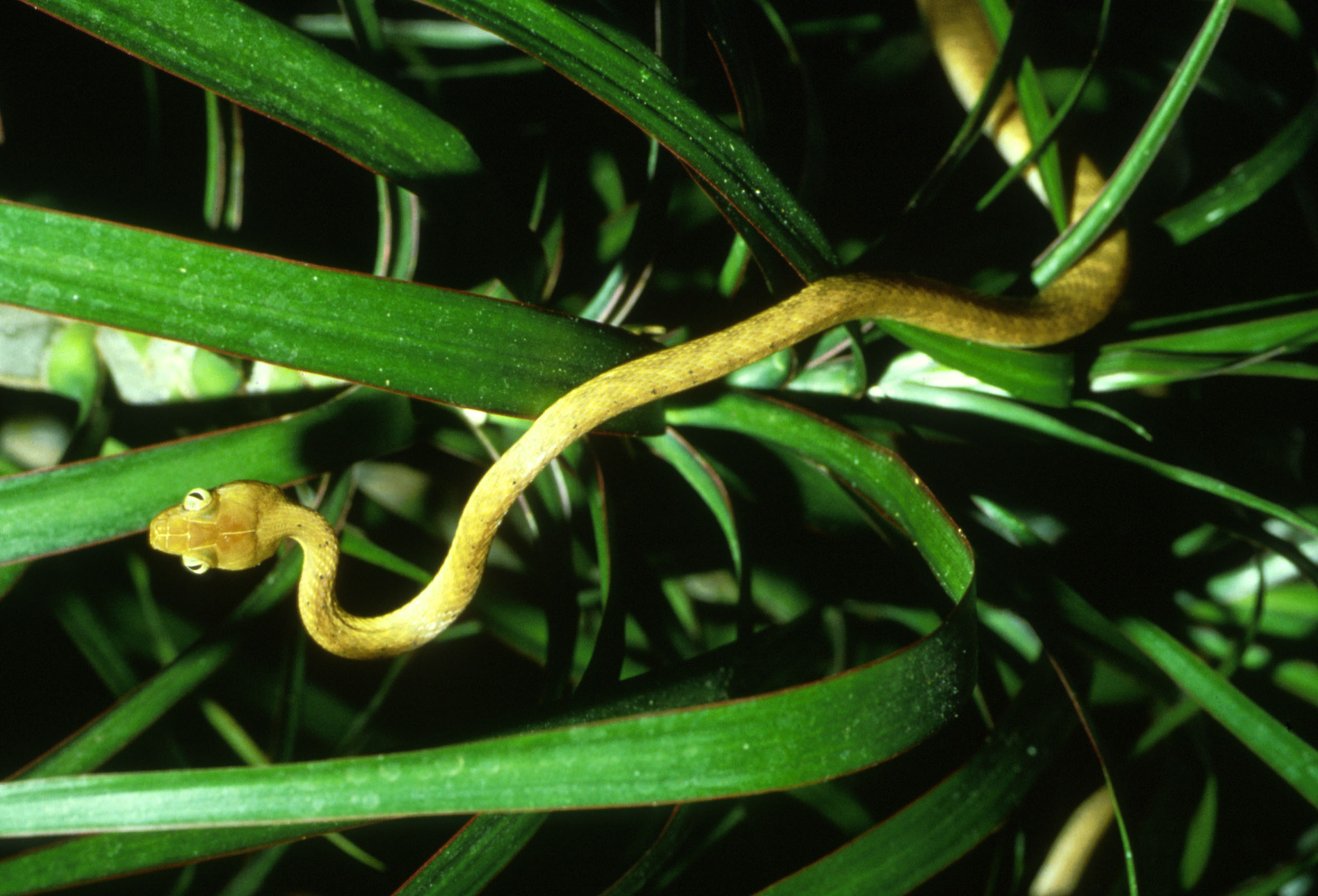|
Ballarat Wildlife Park
Ballarat Wildlife Park is an interactive wildlife park situated in Ballarat, Australia which was opened by Greg Parker in 1987. The Park is situated on of natural bush land. Animals The Park currently holds around 400 species of animals, including free-roaming kangaroos and emus that can be handfed. Most of the animals are native to Australia including koalas, wombats, quokkas, echidnas and both saltwater and freshwater crocodiles. Some foreign animals include the dyeing poison dart frog, Komodo dragon, the American alligator and the Aldabra giant tortoise. The park was also home to the oldest-known living wombat in captivity, Patrick, who died in 2017 aged 32. ;List of species * Aldabra giant tortoise * Alligator snapping turtle * Alpaca * American alligator * Asian forest tortoise * Australian green tree frog * Australian water dragon * Banded rock python * Bare-nosed wombat * Boa constrictor * Broad-headed snake * Brolga * Brown tree snake * Buff-banded rail * Burmes ... [...More Info...] [...Related Items...] OR: [Wikipedia] [Google] [Baidu] |
Ballarat
Ballarat ( ) is a city in the Central Highlands of Victoria, Australia. At the 2021 Census, Ballarat had a population of 116,201, making it the third largest city in Victoria. Estimated resident population, 30 June 2018. Within months of Victoria separating from the colony of New South Wales in 1851, gold was discovered near Ballarat, sparking the Victorian gold rush. Ballarat subsequently became a thriving boomtown that for a time rivalled Melbourne, the capital of Victoria, in terms of wealth and cultural influence. In 1854, following a period of civil disobedience in Ballarat over gold licenses, local miners launched an armed uprising against government forces. Known as the Eureka Rebellion, it led to the introduction of male suffrage in Australia, and as such is interpreted as the origin of Australian democracy. The rebellion's symbol, the Eureka Flag, has become a national symbol. It was on display at Ballarat's Museum of Australian Democracy at Eureka (MADE) from ... [...More Info...] [...Related Items...] OR: [Wikipedia] [Google] [Baidu] |
Australian Green Tree Frog
The Australian green tree frog (''Ranoidea caerulea''), also known as simply green tree frog in Australia, White's tree frog, or dumpy tree frog, is a species of tree frog native to Australia and New Guinea, with Introduced species, introduced populations in the United States and New Zealand, though the latter is believed to have died out. It is morphologically similar to some other members of its genus, particularly the magnificent tree frog (''R. splendida'') and the white-lipped tree frog (''R. infrafrenata''). Larger than most Australian frogs, the Australian green tree frog reaches 10 cm (4 in) or more in length. Its average lifespan in captivity, about 16 years, is long compared with most frogs. Docile and well suited to living near human dwellings, Australian green tree frogs are often found on window sills or inside houses, eating insects drawn by the light. The green tree frog screams when it is in danger to scare off its foe, and squeaks when it i ... [...More Info...] [...Related Items...] OR: [Wikipedia] [Google] [Baidu] |
Dingo
The dingo (''Canis familiaris'', ''Canis familiaris dingo'', ''Canis dingo'', or ''Canis lupus dingo'') is an ancient ( basal) lineage of dog found in Australia. Its taxonomic classification is debated as indicated by the variety of scientific names presently applied in different publications. It is variously considered a form of domestic dog not warranting recognition as a subspecies, a subspecies of dog or wolf, or a full species in its own right. The dingo is a medium-sized canine that possesses a lean, hardy body adapted for speed, agility, and stamina. The dingo's three main coat colourations are light ginger or tan, black and tan, or creamy white. The skull is wedge-shaped and appears large in proportion to the body. The dingo is closely related to the New Guinea singing dog: their lineage split early from the lineage that led to today's domestic dogs, and can be traced back through the Maritime Southeast Asia to Asia. The earliest known dingo fossil, found in Weste ... [...More Info...] [...Related Items...] OR: [Wikipedia] [Google] [Baidu] |
Common Snapping Turtle
The common snapping turtle (''Chelydra serpentina'') is a species of large freshwater turtle in the family Chelydridae. Its natural range extends from southeastern Canada, southwest to the edge of the Rocky Mountains, as far east as Nova Scotia and Florida. The three species of '' Chelydra'' and the larger alligator snapping turtles (genus '' Macrochelys'') are the only extant chelydrids, a family now restricted to the Americas. The common snapping turtle, as its name implies, is the most widespread. The common snapping turtle is noted for its combative disposition when out of the water with its powerful beak-like jaws, and highly mobile head and neck (hence the specific epithet ''serpentina'', meaning "snake-like"). In water, it is likely to flee and hide underwater in sediment. The common snapping turtle has a life-history strategy characterized by high and variable mortality of embryos and hatchlings, delayed sexual maturity, extended adult longevity, and iteroparity (repea ... [...More Info...] [...Related Items...] OR: [Wikipedia] [Google] [Baidu] |
Central Bearded Dragon
The central bearded dragon (''Pogona vitticeps''), also known as the inland bearded dragon, is a species of agamid lizard found in a wide range of arid to semiarid regions of eastern and central Australia. Taxonomy ''Pogona vitticeps'' was first described by German zoologist Ernst Ahl in 1926, who placed it in the genus '' Amphibolurus''. Description Adults of this species can reach a total length of up to , with the tail accounting for more than half. Some sexual dimorphism is present: males can be distinguished from females by a wider cloacal opening, a wider base of the tail, a larger head and beard, and the possession of hemipenes. Males also have more pronounced femoral pores than females (these can be seen as waxy bumps on the underside of the back legs). Bearded dragons vary widely in colour, including brown, reddish-brown, red, yellow, white and orange. They are capable of undergoing moderate changes in coloration, and scales along both sides of the throat, neck, ... [...More Info...] [...Related Items...] OR: [Wikipedia] [Google] [Baidu] |
Bush Stone-curlew
The bush stone-curlew or bush thick-knee, also known as the Iben bird (''Burhinus grallarius'', obsolete name ''Burhinus magnirostris'') is a large, ground-dwelling bird endemic to Australia. Its favoured habitat is open plains and woodlands, where it stalks slowly at night in search of invertebrates such as insects. Its grey-brown coloration is distinguished by dark streaks, its eyes are large and legs are long. It is capable of flight, but relies on the camouflage of its plumage to evade detection during the day; the bush curlew adopts a rigid posture when it becomes aware of an observer. Both sexes care for two eggs laid on the bare ground, usually sited near bush in a shaded position or next to a fallen branch. Taxonomy The bush stone-curlew was first described by English ornithologist John Latham in 1801 under the binomial name ''Charadius grallarius''. Latham published three names simultaneously; however, the seniority of ''C. grallarius'' follows the publication of the nam ... [...More Info...] [...Related Items...] OR: [Wikipedia] [Google] [Baidu] |
Burmese Python
The Burmese python (''Python bivittatus'') is one of the largest species of snakes. It is native to a large area of Southeast Asia and is listed as Vulnerable on the IUCN Red List. Until 2009, it was considered a subspecies of the Indian python, but is now recognized as a distinct species. It is an invasive species in Florida as a result of the pet trade. Description The Burmese python is a dark-colored non-venomous snake with many brown blotches bordered by black down the back. In the wild, Burmese pythons typically grow to , while specimens of more than are unconfirmed. This species is sexually dimorphic in size; females average only slightly longer, but are considerably heavier and bulkier than the males. For example, length-weight comparisons in captive Burmese pythons for individual females have shown: at length, a specimen weighed , a specimen of just over weighed , a specimen of weighed , and a specimen of weighed . In comparison, length-weight comparisons for mal ... [...More Info...] [...Related Items...] OR: [Wikipedia] [Google] [Baidu] |
Buff-banded Rail
The buff-banded rail (''Hypotaenidia philippensis'') is a distinctively coloured, highly dispersive, medium-sized rail of the rail family, Rallidae. This species comprises several subspecies found throughout much of Australasia and the south-west Pacific region, including the Philippines (where it is known as tikling), New Guinea, Australia, New Zealand (where it is known as the banded rail or moho-pererū in Māori), and numerous smaller islands, covering a range of latitudes from the tropics to the Subantarctic. Description It is a largely terrestrial bird the size of a small domestic chicken, with mainly brown upperparts, finely banded black and white underparts, a white eyebrow, chestnut band running from the bill round the nape, with a buff band on the breast. It utilises a range of moist or wetland habitats with low, dense vegetation for cover. It is usually quite shy but may become very tame and bold in some circumstances, such as in island resorts within the Great Ba ... [...More Info...] [...Related Items...] OR: [Wikipedia] [Google] [Baidu] |
Brown Tree Snake
The brown tree snake (''Boiga irregularis''), also known as the brown catsnake, is an arboreal rear-fanged colubrid snake native to eastern and northern coastal Australia, eastern Indonesia (Sulawesi to Papua), Papua New Guinea, and many islands in northwestern Melanesia. This snake is infamous for being an invasive species responsible for extirpating the majority of the native bird population in Guam. It is also one of the very few colubrids found in Australia, where elapids are more common. Diet The brown tree snake preys upon birds, lizards, bats, and rats and other small rodents in its native range. It preys on birds and shrews in Guam.Pianka, Eric R.; King, Dennis; King, Ruth Allen. (2004). ''Varanoid Lizards of the World''. Indiana University Press, 588 pages They threaten local birds and lizards such as the Dubious dtella. Owing to the availability of prey and lack of predators in introduced habitats such as Guam, they have been known to grow to larger sizes than ... [...More Info...] [...Related Items...] OR: [Wikipedia] [Google] [Baidu] |
Brolga
The brolga (''Antigone rubicunda''), formerly known as the native companion, is a bird in the crane family. It has also been given the name Australian crane, a term coined in 1865 by well-known ornithologist John Gould in his '' Birds of Australia''. The brolga is a common, gregarious wetland bird species of tropical and south-eastern Australia and New Guinea. It is a tall, upright bird with a small head, long beak, slender neck, and long legs. Its plumage is mainly grey, with black wing tips, and it has an orange-red band on its head. The brolga's courting dance is similar to that of other cranes. The nest is built of wetland vegetation, either on an elevated piece of land or floating on shallow water in marshland, and usually two eggs are laid. Incubation takes 32 days, and the newly hatched young are precocial. The adult diet is omnivorous and includes plant matter, invertebrates, and small vertebrates. Although the bird is not considered endangered over the majority of it ... [...More Info...] [...Related Items...] OR: [Wikipedia] [Google] [Baidu] |
Broad-headed Snake
The broad-headed snake (''Hoplocephalus bungaroides'') is a species of venomous snake in the family Elapidae. The species is restricted to the Sydney Basin in New South Wales, Australia. It is one of three snakes in the genus ''Hoplocephalus'', all restricted to eastern Australia. It is currently endangered in New South Wales and is listed as vulnerable under the Commonwealth Legislation. Taxonomy German naturalist Hermann Schlegel described the species in 1837 as ''Naja bungaroides''. Description The broad-headed snake is a small to medium-sized species of venomous snake, which attains an average total length (including tail) of , although some records show that it can grow as long as . It is black with numerous irregular yellow markings arranged in narrow cross-bands, Boulenger GA (1896). ''Catalogue of the Snakes in the British Museum (Natural History). Volume III., Containing the Colubridæ (Opisthoglyphæ and Proteroglyphæ) ...'' London: Trustees of the British Museum (Na ... [...More Info...] [...Related Items...] OR: [Wikipedia] [Google] [Baidu] |
Boa Constrictor
The boa constrictor (scientific name also ''Boa constrictor''), also called the red-tailed boa, is a species of large, non-venomous, heavy-bodied snake that is frequently kept and bred in captivity. The boa constrictor is a member of the family Boidae, found in tropical South America, as well as some islands in the Caribbean. A staple of private collections and public displays, its color pattern is highly variable yet distinctive. Four subspecies are currently recognized. This article focuses on the species ''Boa constrictor'' as a whole, and on the nominate subspecies ''B. c. constrictor''. Common names Though all boids are constrictors, only this species is properly referred to as a "boa constrictor"—a rare instance of an animal having the same common English name and scientific binomial name. All subspecies are referred to as "boa constrictors", and are part of a diverse group of New World boas referred to as "red-tailed" boas, comprising species of both ''Boa constrictor' ... [...More Info...] [...Related Items...] OR: [Wikipedia] [Google] [Baidu] |










